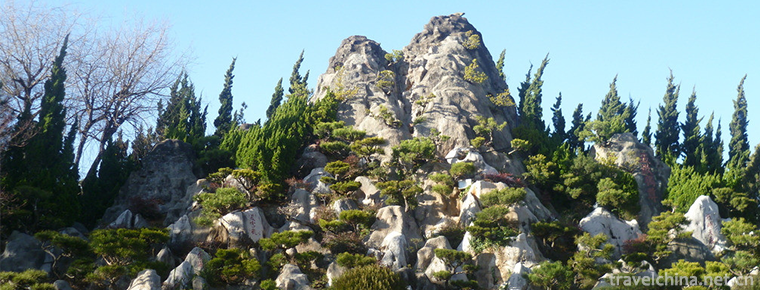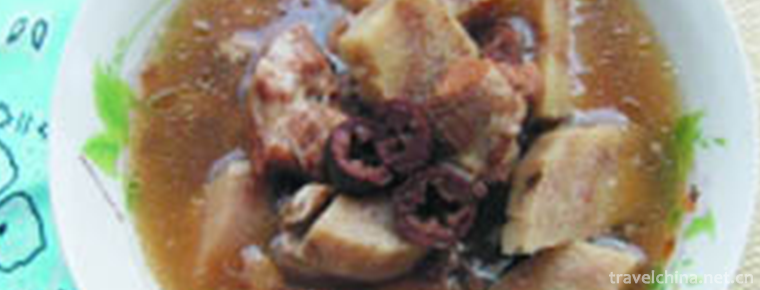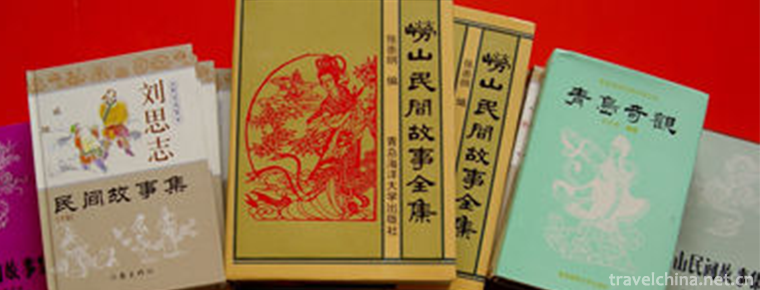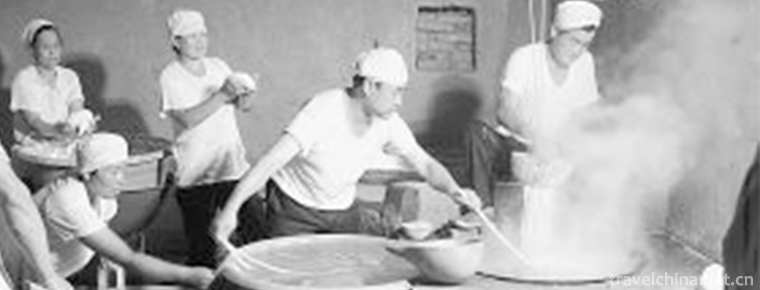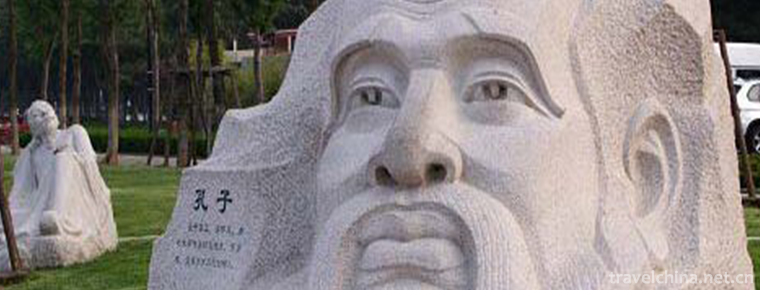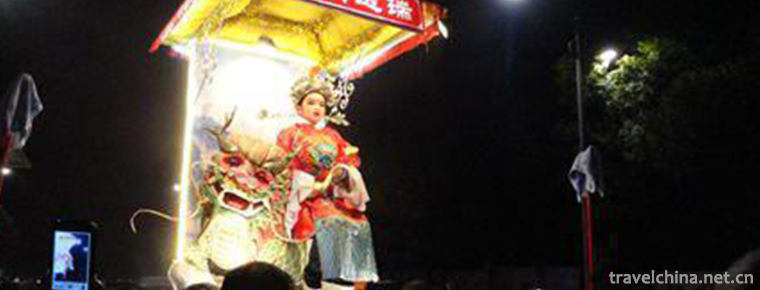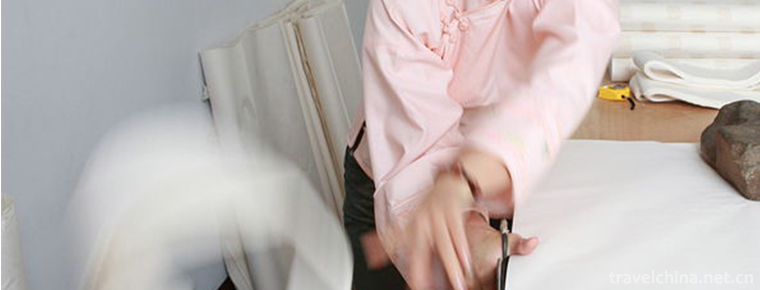Xibo embroidery
Xibo embroidery
Xibo embroidery has a long history and rich connotation. Xibo women are skillful and skillful in capturing the beautiful scenery in life. During more than 200 years of living in the western part of the motherland, Xibo women's embroidery works have won the appreciation and recognition of the people of all ethnic groups. Xibo embroidery appears in every corner of life: clothes, headscarves, pillowcases, shoes, curtains and so on.
In May 2011, Xibo embroidery declared by Chabuchal Xibo Autonomous County of Xinjiang Autonomous Region was listed in the third batch of national intangible cultural heritage list with the approval of the State Council.
Historical Origin
Embroidery everywhere is the traditional handicraft technology widely used by the Xibo people. In the long-term practice, the Xibo people embroidered beautiful things endowed by nature into their works with their dexterous hands.
Embroidery patterns include figures, mountains and rivers, trees, flowers, birds and animals, etc. Among them, butterflies and chrysanthemums have become the mascots of the Xibo people, symbolizing freedom, tranquility, peace and beauty. They also give the Xibo people a kind of spiritual strength and encourage them to multiply and thrive in the difficult environment.
Xibo women's embroidery works appear in every corner of life, including clothing, headscarves, pillowcases, shoes, curtains and other small items such as tablecloths, hangings and sachets.
artistic characteristics
In Niullu Township of Nadaqi, we watched the embroidery process of Xibo women. Aixin Sheli Town has an embroidery workshop organized by the Town Women's Federation, which is under the responsibility of Tong Xuelan, a disabled folk embroidery artist. The embroidery here is all hand-made and the process is very slow. They mainly make traditional Xibo clothes and other daily necessities. Most of these women embroider during their leisure time. In Niulu Lu Township of Nadaqi, we entered an embroidery workshop, which is another folk embroidery association established with the support of the township government.
In addition to traditional manual embroidery, there are also machine embroidery. The person in charge, Ms. Yang Xiuyu, said that there are fewer hand embroidery products here, and machine embroidery is generally used. Machine embroidery is faster than manual embroidery. In addition to making handbags, decorative paintings, sachets and other small items, there are also customers here to order clothing and so on. Because most of the embroidery works here cater to the needs of the market, it attracts many tourists from other places and some businessmen to buy or order. The township government also specially bought samples of Su embroidery, organized folk embroidery artists to study, and prepared to expand the scale of embroidery workshops. In the works of the Embroidery Workshop, the figure patterns embroidered here are the portraits of Mao Zedong. It can be seen that the Xibo people have a special feeling for Chairman Mao. They have integrated the respect and love for the leaders in their hearts into this thread.
Linear painting books. These line-bound albums retain the Xibo embroidery patterns painted by the elderly when they were young. Each one is clear and clear. The lines are natural and smooth. The flowers, butterflies and birds in the paintings are vivid and amazing. Among the items kept by the old man was a pair of embroidered shoes she wore when she got married at the age of 16. Nowadays, the silk thread and stitches on the upper are still clearly visible. As the old man showed us these long-retained objects, he regretted his loss. She hopes that in her lifetime, she can pass on the embroidery technology she has mastered. She hopes that the local government can do more to excavate folk art and encourage the development of embroidery industry. Because of her old age and illness, no one has come to ask for embroidery technology, but she is still looking forward to the works she keeps and has a suitable place to collect them.
Inheritance Significance
In order to protect and inherit Xibo traditional culture, the government of Chabul County has done a lot of work, such as declaring national intangible cultural heritage projects, allocating special funds for protection, establishing westward migration association, establishing cultural protection areas and rebuilding cultural sites. It is our duty and duty to protect national culture. Xibo embroidery culture needs to be inherited. All ethnic brothers and sisters should shoulder the important task of the times. Today, with the development of the times, we should first start from changing our ideas. To protect national embroidery culture, we should have a deep understanding of the existing heritage and protect it through various channels. In addition, education for the next generation should be strengthened to raise the awareness of young people to protect traditional culture. Efforts should be made to promote national culture and develop national undertakings so that traditional culture can be admired by future generations and benefit future generations.


-
Kunming World Horticultural Expo Garden
Kunming World Horticulture Expo Garden (hereinafter referred to as the World Horticulture Expo Garden) is the site of the 1999 Kunming World Horticulture Expo..
Views: 238 Time 2018-12-12 -
The Ancient City of Gaochang
Gaochang City, which began in the first century B.C., was built by the army of Tuntian in the territory of Cheshi in the Western Han Dynasty. The site of the Old Town is located in the vicinity of Har.
Views: 116 Time 2019-01-12 -
Weihai Dingxiang Ecotourism Resort
Panjin Dingxiang Ecotourism Resort is located in the western suburb of Panjin City. The tourist area is mainly composed of Taiping River scenic belt, Bird Paradise Scenic.
Views: 501 Time 2019-02-22 -
Eight claw Fish Powder Pueraria Decoction
500 grams of Pueraria Thunb, 50 grams of octopus, 400 grams of pork legs, four candied dates, and 1/6 peel..
Views: 132 Time 2019-03-27 -
Traditional archery
The traditional bow is an ancient invention consisting of three parts: wood, horn and tendon. The manufacturing process is complex and the materials used are various, and the workmanship and material .
Views: 153 Time 2019-04-19 -
Laoshan Folk Stories
Laoshan folk tales, commonly known as Lagua, are oral literature created by the local people of Laoshan Mountain in Shandong Province for thousands of years. There were few written records before libe.
Views: 115 Time 2019-05-11 -
Longkou Fans Traditional Handicraft Production Techniques
In the late Ming and early Qing Dynasties, Zhaoyuan people created a new technique of making mungbean vermicelli, which was divided into three manual operation processes: powder pushing, powder leakin.
Views: 245 Time 2019-05-14 -
Quyang stone carving
Quyang stone carving is an important part of folk art in Quyang County, Hebei Province. Since the Western Han Dynasty, Quyang stone workers have used marble to carve steles and other objects. Quyang s.
Views: 262 Time 2019-06-11 -
Legend of Su Dongpo
The legend of Su Dongpo is a group of traditional folklore stories evolved from the story of Su Shi, a great writer in the Northern Song Dynasty..
Views: 154 Time 2019-06-16 -
Raise the Pavilion
Lifting the pavilion, also known as the pavilion, is a unique traditional folk dance that integrates historical stories, myths and legends, and integrates painting, opera, tie-up, paper sculpture, acr.
Views: 139 Time 2019-06-18 -
Xuan Paper Making Skills
The production of Xuan Paper, first through a leather production process and a grass production process, and then through more than 100 processes..
Views: 123 Time 2019-07-09 -
Resources and environment of Leshan
By the end of 2018, the total energy consumption of Leshan City was 15.3994 million tons of standard coal, an increase of 580900 tons of standard coal over the previous year. The energy consumption of 10000 yuan GDP decreased by 4.38%..
Views: 145 Time 2020-12-17
